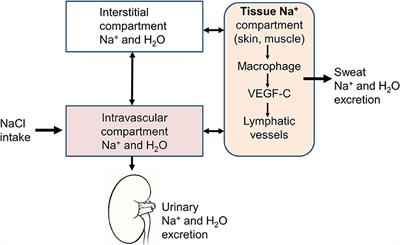GorillaHead
Member
This is a very old study i am posting here but i find it very interesting. PDF Attached below.
The study claims that high salt intake is associated with AGA and they might be on to something.
A year ago i was searching the forums and I stumbled upon the late Travis post about aldosterone and the mineralcorticoid. He theorized that mpb could be solved by blocking the mineralcorticoid.
He presented some solid information, whether i agree 100% is still up in the air.
What grabbed my attention was the fact he talked about marine animals having high mineralocorticoid activity.
I looked at data showing that animals with high aldosterone levels were often sea mammals. The animal with the highest aldosterone was the manatee and the dolphin has some of the lowest.
interestingly enough they found high levels of elastin bundles in mpb scalp tissue.
And in this study aldosterone shows just that Aldosterone and Mineralocorticoid Receptor Antagonists Modulate Elastin and Collagen Deposition in Human Skin
So I did more research and it seems that the manatee has some of the thickest skin ever at 3 inches more than a dolphins. High collagen fibers.
mpb eventually becomes perifollicular fibrosis. High dense levels of collagen deposition.
Now aldosterone is directly related to sodium and minoxidil is a potassium channel opener.
So this got me wondering about salt content in skin.
Research shows skin has an influence over blood pressure and this was dependent on the salt tissue levels of the skin.
So apparently the body increases salt skin tissue levels when it wants to store salt.
I found out in dermatitis which is often associated with AGA that the scalp tissue has very high levels of salt.

this is specifically atopic dermatitis but when this condition occurs on the scalp it becomes sebborrheic dermatitis. I read that sodium is increased in skin tissues infection Study reveals salt’s role in infection control
So it looks like salt is placed in the skin during infection and for storage.
In Chinese medicine they correlate kidneys and hairloss and some on this very forum theorized edema and Hairloss. Also high intercellular sodium is thought to perhaps cause hyper calcium influx. Tying this in with the calcification theory of the ivory dome

 www.ncbi.nlm.nih.gov
www.ncbi.nlm.nih.gov
“Clinical studies have shown an age-dependent increase in skin tissue Na+content”

 www.frontiersin.org
www.frontiersin.org
So I beleive Travis didnt have the cure as he wasnt addressing root cause but he was most definitely onto something. Because it seems to me that sodium. Potassium. Magnesium and calcium are some of the the biggest players in AgA.
Especially sodium
The study claims that high salt intake is associated with AGA and they might be on to something.
A year ago i was searching the forums and I stumbled upon the late Travis post about aldosterone and the mineralcorticoid. He theorized that mpb could be solved by blocking the mineralcorticoid.
He presented some solid information, whether i agree 100% is still up in the air.
What grabbed my attention was the fact he talked about marine animals having high mineralocorticoid activity.
I looked at data showing that animals with high aldosterone levels were often sea mammals. The animal with the highest aldosterone was the manatee and the dolphin has some of the lowest.
interestingly enough they found high levels of elastin bundles in mpb scalp tissue.
And in this study aldosterone shows just that Aldosterone and Mineralocorticoid Receptor Antagonists Modulate Elastin and Collagen Deposition in Human Skin
So I did more research and it seems that the manatee has some of the thickest skin ever at 3 inches more than a dolphins. High collagen fibers.
mpb eventually becomes perifollicular fibrosis. High dense levels of collagen deposition.
Now aldosterone is directly related to sodium and minoxidil is a potassium channel opener.
So this got me wondering about salt content in skin.
Research shows skin has an influence over blood pressure and this was dependent on the salt tissue levels of the skin.
So apparently the body increases salt skin tissue levels when it wants to store salt.
I found out in dermatitis which is often associated with AGA that the scalp tissue has very high levels of salt.
Salt could be a key factor in allergic immune reactions
Researchers have demonstrated in cell cultures that salt leads to the formation of Th2 cells. These immune cells are active in allergic conditions such as atopic dermatitis. The team also detected elevated salt concentrations in the skin of patients.
www.sciencedaily.com
this is specifically atopic dermatitis but when this condition occurs on the scalp it becomes sebborrheic dermatitis. I read that sodium is increased in skin tissues infection Study reveals salt’s role in infection control
So it looks like salt is placed in the skin during infection and for storage.
In Chinese medicine they correlate kidneys and hairloss and some on this very forum theorized edema and Hairloss. Also high intercellular sodium is thought to perhaps cause hyper calcium influx. Tying this in with the calcification theory of the ivory dome

THE ROLE OF INTRACELLULAR SODIUM (Na+) IN THE REGULATION OF CALCIUM (Ca2+)-MEDIATED SIGNALING AND TOXICITY
It is known that activated N-methyl-D-aspartate receptors (NMDARs) are a major route of excessive calcium ion (Ca[2+] ) entry in central neurons, which may activate degradative processes and thereby cause cell death. Therefore, NMDARs are now recognized ...
“Clinical studies have shown an age-dependent increase in skin tissue Na+content”

New Insights on the Role of Sodium in the Physiological Regulation of Blood Pressure and Development of Hypertension
A precise maintenance of sodium and fluid balance is an essential step in the regulation of blood pressure and alterations of this balance may lead to the development of hypertension. In recent years, several new advances were made in our understanding of the interaction between sodium and blood...
So I beleive Travis didnt have the cure as he wasnt addressing root cause but he was most definitely onto something. Because it seems to me that sodium. Potassium. Magnesium and calcium are some of the the biggest players in AgA.
Especially sodium
Attachments
Last edited:

